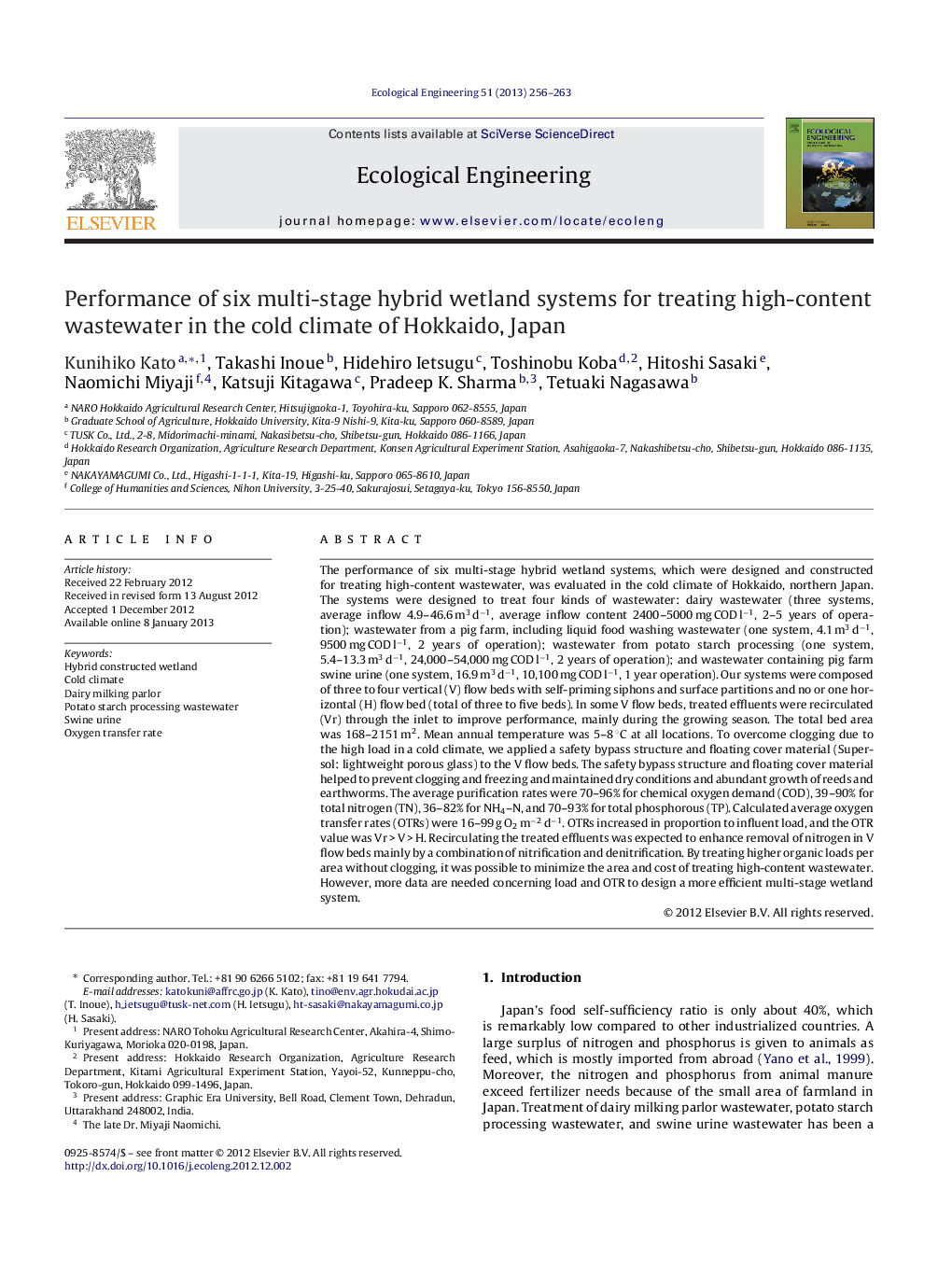| کد مقاله | کد نشریه | سال انتشار | مقاله انگلیسی | نسخه تمام متن |
|---|---|---|---|---|
| 4389852 | 1618047 | 2013 | 8 صفحه PDF | دانلود رایگان |

The performance of six multi-stage hybrid wetland systems, which were designed and constructed for treating high-content wastewater, was evaluated in the cold climate of Hokkaido, northern Japan. The systems were designed to treat four kinds of wastewater: dairy wastewater (three systems, average inflow 4.9–46.6 m3 d−1, average inflow content 2400–5000 mg COD l−1, 2–5 years of operation); wastewater from a pig farm, including liquid food washing wastewater (one system, 4.1 m3 d−1, 9500 mg COD l−1, 2 years of operation); wastewater from potato starch processing (one system, 5.4–13.3 m3 d−1, 24,000–54,000 mg COD l−1, 2 years of operation); and wastewater containing pig farm swine urine (one system, 16.9 m3 d−1, 10,100 mg COD l−1, 1 year operation). Our systems were composed of three to four vertical (V) flow beds with self-priming siphons and surface partitions and no or one horizontal (H) flow bed (total of three to five beds). In some V flow beds, treated effluents were recirculated (Vr) through the inlet to improve performance, mainly during the growing season. The total bed area was 168–2151 m2. Mean annual temperature was 5–8 °C at all locations. To overcome clogging due to the high load in a cold climate, we applied a safety bypass structure and floating cover material (Supersol: lightweight porous glass) to the V flow beds. The safety bypass structure and floating cover material helped to prevent clogging and freezing and maintained dry conditions and abundant growth of reeds and earthworms. The average purification rates were 70–96% for chemical oxygen demand (COD), 39–90% for total nitrogen (TN), 36–82% for NH4–N, and 70–93% for total phosphorous (TP). Calculated average oxygen transfer rates (OTRs) were 16–99 g O2 m−2 d−1. OTRs increased in proportion to influent load, and the OTR value was Vr > V > H. Recirculating the treated effluents was expected to enhance removal of nitrogen in V flow beds mainly by a combination of nitrification and denitrification. By treating higher organic loads per area without clogging, it was possible to minimize the area and cost of treating high-content wastewater. However, more data are needed concerning load and OTR to design a more efficient multi-stage wetland system.
Journal: Ecological Engineering - Volume 51, February 2013, Pages 256–263